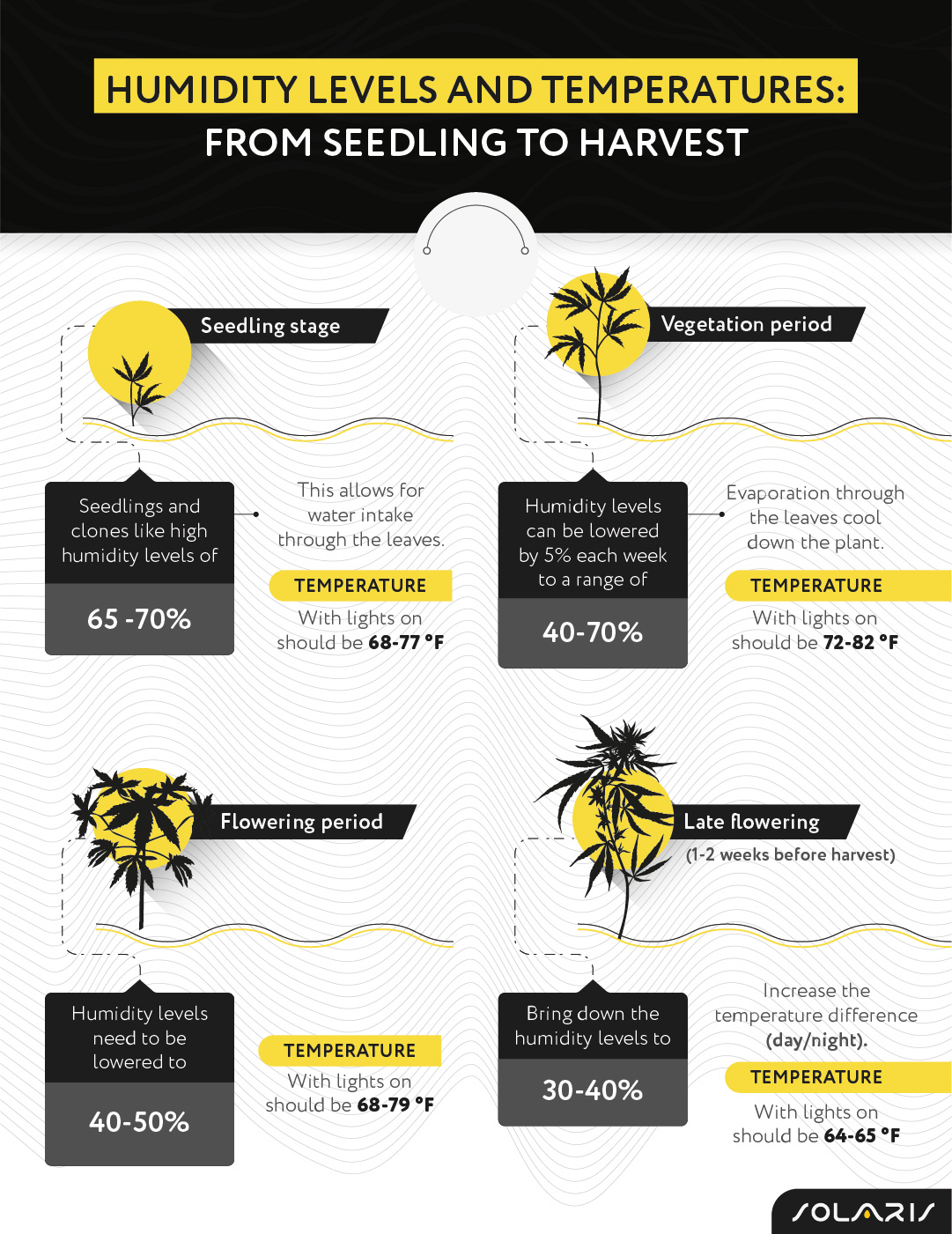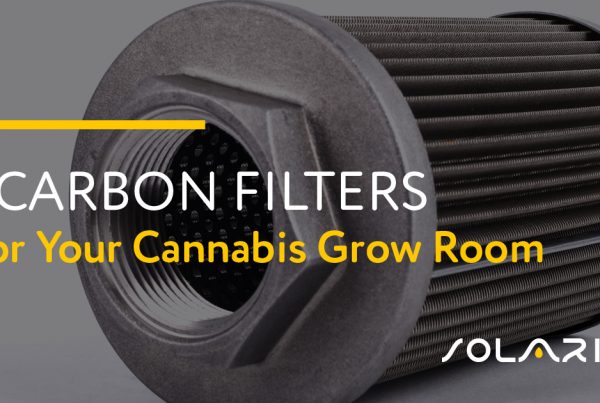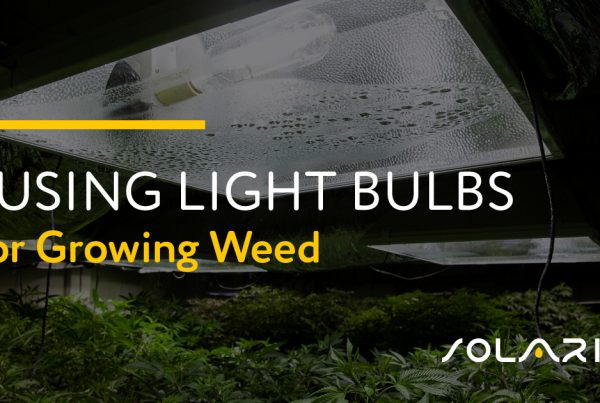If you want to grow sticky, high-potency buds, your cannabis will demand attention to its many needs. One need of the growing cannabis plant that is commonly overlooked is humidity.
Humidity is very important to your plant. It will help determine your plant’s resilience against mold or mildew in addition to how much your plants need to drink. Getting it just right can improve plant growth and increase your yields.
What is humidity?
Humidity is expressed as the quantity of water vapor in the air. Humidity plays a necessary role in influencing how much evaporation occurs in cannabis plants. Your plant will take in more nutrition and water when the humidity is low.
Cannabis plants will guard themselves against water scarcity by closing their stomata. So naturally, this will stunt the growth of your plant due to the lack of water absorption. This is why you must have the proper humidity levels in your grow area.
Effects of poor humidity management
Some common problems with weed plants stemming from poor humidity management include:
- White powdery mildew: This is a fungal disease that will show up in high humidity environments. This can be tricky since young cannabis plants flourish in humid environments. Luckily, you can stave off white powdery mildew by making sure there is proper airflow in your grow area; a small oscillating fan works wonders.
- Bud rot or mold: Imagine harvesting a huge, dense main cola from your plant only to see the insides are white or brown with mold. Buds in this condition are unusable and should be thrown away.
- Nutrient overload: This is a factor that partly determines how much your plants will drink. If the air is dry, your plants will tend to drink more at their roots. If they are already drinking more due to high temperatures, low humidity can cause them to drink a lot of water through their roots and uptake too-high levels of nutrients. If your plant takes in more nutrients than the plant can use, the leaves will begin to show yellow or burnt tips, which is the result of nutrient burn.
- Slowed growth: Cannabis plants love higher humidity when they are young, and lower humidity when they are mature. If they are not getting these conditions, they may not be growing nearly as fast or healthy as they could.
How temperatures and humidity levels interact
It is important to know that humidity levels and temperatures are closely related to one another. When we talk about humidity, we usually mean relative humidity (RH), which is the ratio of partial pressure of water vapor to the maximum vapor pressure of water at the same temperature.
It is easy to understand by knowing the basic principle that warm air holds more water vapor than cold air. This is one of the reasons why it is necessary to extract a lot of warm air from our grow room, and ideally, allow cool air to enter.
How to measure humidity
A hygrometer is a device that measures the level of humidity in the atmosphere. Also known as a humidity meter or humidity gauge, hygrometers measure the amount of moisture in a specific environment. It does this by calculating changes in pressure and temperature.
There are many different types of hygrometers, including digital (also known as electrical) hygrometers, mechanical hygrometers, psychrometers, and dew point hygrometers. Digital hygrometers are the most commonly used hygrometers.
The higher-priced hygrometers are usually of better quality and are certainly worth it. These devices can have a built-in storage bank that tracks the highest and lowest values, to help you determine how well you stayed within the preferred range.
Humidity levels and temperatures: from seedling to harvest

We need to define what humidity and temperature control means when growing cannabis. It makes sense to divide the life of cannabis plants into 4 different stages in which humidity levels, and temperatures, should be adjusted to ensure healthy growth.
Seedling stage
- Seedlings and clones like high humidity levels of 65-70 percent.
- High humidity levels allow for water intake through the leaves.
- The temperature with lights on should be 68-77 degrees Fahrenheit.
Vegetation period
- Humidity levels can be lowered by 5 percent each week to a range of 40-70 percent.
- Roots absorb more water; evaporation through the leaves cool down the plant.
- The temperature with lights on should be 72-82 degrees Fahrenheit.
Flowering period
- Humidity levels need to be lowered to 40-50 percent.
- Slightly lower the temperatures in flowering to 68-79 degrees Fahrenheit.
Late flowering (1-2 weeks before harvest)
- The following steps can improve yield, flavor, and appearance.
- Bring down the humidity levels to 30-40 percent.
- Lower daytime temperatures, and also increase the temperature difference (day/night).
- The temperature with lights on should be 64-75 degrees Fahrenheit.
How to raise humidity levels
You have a few options for raising the humidity in your grow room. For starters, you can try spraying water on the walls. Also, try putting the lights further up so the temperature will go down a little near the plants. This way you will not have to turn on the extractor fan as often. If you put bottles or buckets of water around the grow room, or even wet towels, this will also raise the humidity level.
The best way to accomplish your goal is to use a humidifier. Humidifiers transform water into water vapor and shoot a constant mist consisting of high humidity into your room. Depending on which one you buy it may come with a humidistat to monitor the humidity level and will even turn on if it goes beneath the value you set it to.
How to decrease humidity levels
Once your cannabis plant starts flowering the humidity will need to be decreased, so it is necessary to dehumidify. Try using the extractor fan on a higher setting than usual or you can even create cold air in the room by using a portable air conditioner.
Dehumidifiers are most certainly your best option. It has the capability of taking moisture from the air and draining it or holding it in a reservoir. Make sure to get a larger humidifier because the smaller ones fill up quickly.
Humidity levels for outdoor cannabis plants
Humidity is much less of an issue when growing your cannabis plants outdoors. The springtime and the start of summer offer higher humidity which works just fine since there are no buds present on the plant for moisture to gather. Any moisture on the plant from morning dew will easily evaporate throughout the day.
Once summertime ends, the flowering stage starts and there is a shift in the climate, resulting in cooler days and more rainfall. This usually makes the humidity higher. In the cooler months, the morning dew could be an issue since the sun is not guaranteed to come out and the temperatures are sometimes too low to evaporate it.
Luckily a little bit of rain will not cause the buds to rot, but you should remain on the lookout for this. In the last portion of the flowering stage, it might be a good idea to brush the dew off your cannabis plants in the mornings.
Humidity levels for drying buds
Keep the humidity in the drying room to around 50 percent. This will allow your buds to dry, but keep them from drying too quickly.
As a drying and curing technique, some growers like to keep the humidity a little higher so buds dry slower which could increase the quality of your cured buds. Drying with high humidity is considered an advanced technique because drying must be done with extra care to prevent mold from forming on your harvested buds.
It is good to have air circulation in the drying area, but it is recommended that no air is blown directly over the buds to prevent them from drying too quickly.


